Tired of managing servers?
You’re stuck handling server provisioning, scaling, and maintenance. This eats up valuable time your team could be spending on building new product features.
The constant operational burden not only slows down your deployment cycles but also inflates your overhead costs significantly.
This constant firefighting with infrastructure creates a major bottleneck. It prevents your engineers from focusing on innovation and delivering true business value to your customers.
Serverless platforms promise a better way forward, letting you focus entirely on writing code and delivering value without the typical operational headaches.
In this article, I’m going to guide you through the best serverless platform options. I’ll help you evaluate solutions that accelerate your time-to-market and simplify architecture.
You’ll discover how to choose a platform that scales reliably, offers predictable costs, and finally frees your team from tiresome infrastructure maintenance tasks.
Let’s get started.
Quick Summary:
| # | Software | Rating | Best For |
|---|---|---|---|
| 1 | Amazon Web Services → | Growing SaaS firms | |
| 2 | Google Cloud → | Principal engineers & CTOs | |
| 3 | Microsoft Azure → | SaaS firms boosting productivity | |
| 4 | Vercel → | Developer-centric startups | |
| 5 | Netlify → | E-commerce & frontend teams |
1. Amazon Web Services

Struggling with complex backend infrastructure and slow deployments?
Amazon Web Services addresses these with powerful serverless computing capabilities, letting you run code and manage data without server concerns.
This means your technical team can focus on delivering business value, not infrastructure maintenance.
Ready to simplify your backend?
AWS offers solutions for advanced analytics, data management, and even predictive analytics with machine learning, all without server management overhead.
You can also use AWS to modernize your applications and mainframes, providing a seamless transition to a serverless architecture that scales reliably. With robust security and compliance features, including over 300 services and support for 143 standards, you can build and scale applications on a secure-by-design cloud, ensuring data privacy and operational integrity.
This helps you innovate faster.
While we’re discussing security, understanding identity management software is equally important for a holistic approach.
Key features:
- Serverless Computing: Run code, manage data, and integrate applications without the burden of managing servers, accelerating deployment and reducing operational overhead.
- Migration & Modernization: Plan and execute seamless migrations while modernizing existing applications and mainframes, ensuring compatibility and future-proofing your stack.
- Security & Compliance Tools: Leverage over 300 security, compliance, and governance services, ensuring your applications meet the highest security standards and data privacy regulations.
Amazon Web Services features, pricing, & alternatives →
Verdict: For principal engineers and technical leads seeking the best serverless platform, Amazon Web Services provides unparalleled flexibility and a broad range of capabilities. Its focus on automating deployment and minimizing operational burden makes it ideal for accelerating time-to-market and ensuring predictable costs for growing SaaS firms.
2. Google Cloud
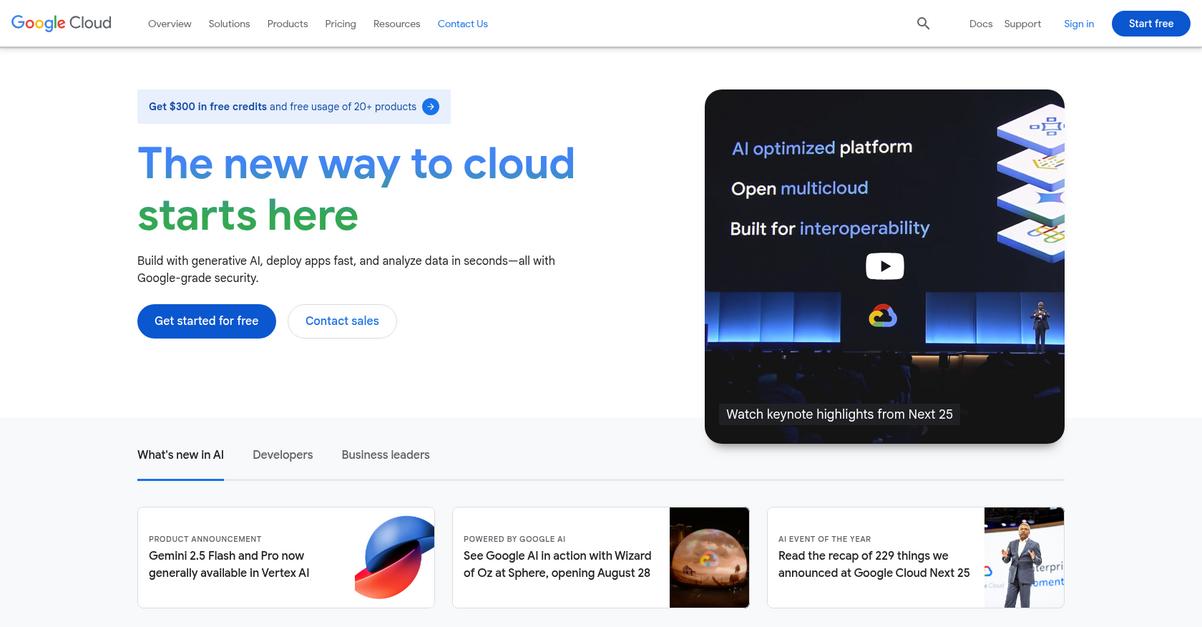
Is your team bogged down by manual infrastructure management? Google Cloud helps you focus on code and slash overhead.
This means you can leverage fully managed serverless products like Cloud Run and App Engine. These tools automatically deploy, scale, and manage your applications.
This capability directly addresses the pain point of infrastructure overhead, allowing your developers to accelerate deployment without complex configurations.
Ready to build faster?
Google Cloud provides a fully managed serverless environment, enabling rapid app development and deployment without the hassle of server provisioning. This frees up your engineers to innovate.
Specifically, Cloud Functions lets you create functions that respond to cloud events, while Workflows orchestrates serverless products and API services. You can also migrate and modernize existing apps without rewriting code.
Additionally, with Gemini Code Assist, your developers get AI-powered code generation, recommendations, and completion directly in their IDE, significantly streamlining the software development lifecycle. You’ll gain predictable costs with clear pricing.
Achieve faster time-to-market and predictable costs.
Speaking of cost management and business efficiency, if you’re also looking to boost your profits and margin control, my guide on price monitoring software can help.
Key features:
- Fully Managed Environment: Google Cloud’s serverless options like Cloud Run and App Engine handle infrastructure, allowing your team to deploy apps quickly without managing servers.
- AI-Powered Development Tools: Gemini Code Assist offers AI-driven code generation, recommendations, and completion, accelerating your development workflows and increasing developer productivity.
- Automated Scaling and Management: The platform automatically scales your applications based on demand and handles all underlying infrastructure, minimizing operational burden and ensuring reliable performance.
Google Cloud features, pricing, & alternatives →
Verdict: For principal engineers and CTOs seeking the best serverless platform, Google Cloud excels by automating infrastructure management and accelerating deployment. Its fully managed services like Cloud Run and App Engine, combined with AI-powered development tools such as Gemini Code Assist, enable your teams to focus on delivering business value, ensuring fast time-to-market and predictable costs, as demonstrated by the success of companies like Snap.
3. Microsoft Azure
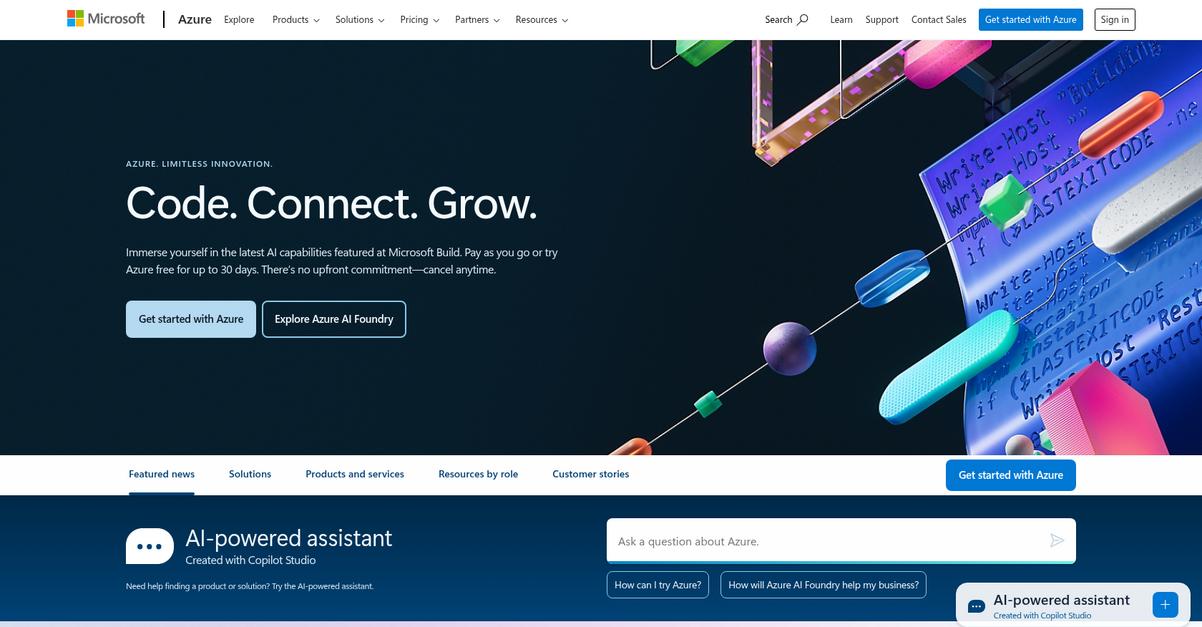
Tired of infrastructure headaches?
Microsoft Azure offers serverless computing, including Azure Functions and Azure Container Apps, to help you escape manual management. This means you can focus entirely on developing your applications, freeing your team from operational burdens.
This allows for the rapid deployment of customer-facing applications, accelerating your time-to-market and keeping you competitive. The result is a streamlined development process.
Here’s how Azure delivers this.
Azure allows you to build and scale apps with managed Kubernetes, leveraging services like Azure Kubernetes Service (AKS) for robust, flexible solutions. Additionally, Azure Functions trigger applications with serverless computing, letting your code run on demand without provisioning or managing servers. This enables you to deploy VMs in seconds and respond to changes faster. Plus, with Azure DevOps, you can bring together people, processes, and products to continuously deliver value. The platform also offers flexible purchase options, including a pay-as-you-go model or a free trial, ensuring predictable costs and reducing budget approval hurdles.
Automate deployment and minimize operational burden.
While we’re discussing tools that streamline operations, you might also be interested in my guide on self hosted help desk software to manage customer support efficiently.
Key features:
- Azure Functions: Trigger applications with serverless computing, automating deployment and eliminating manual server management, allowing your developers to focus on delivering business value.
- Azure Kubernetes Service (AKS): Build and scale apps with managed Kubernetes, providing a robust and flexible environment that integrates with existing workflows and reliably scales.
- Azure DevOps: Bring together people, processes, and products to continuously deliver value, streamlining CI/CD workflows and accelerating time-to-market.
Microsoft Azure features, pricing, & alternatives →
Verdict: Microsoft Azure stands out as a strong candidate for the best serverless platform, offering capabilities like Azure Functions for event-driven automation and AKS for managed Kubernetes. Its focus on accelerating AI app development, seamless integration with GitHub Copilot, and flexible pricing options make it ideal for SaaS firms seeking to boost developer productivity and reduce overhead.
4. Vercel
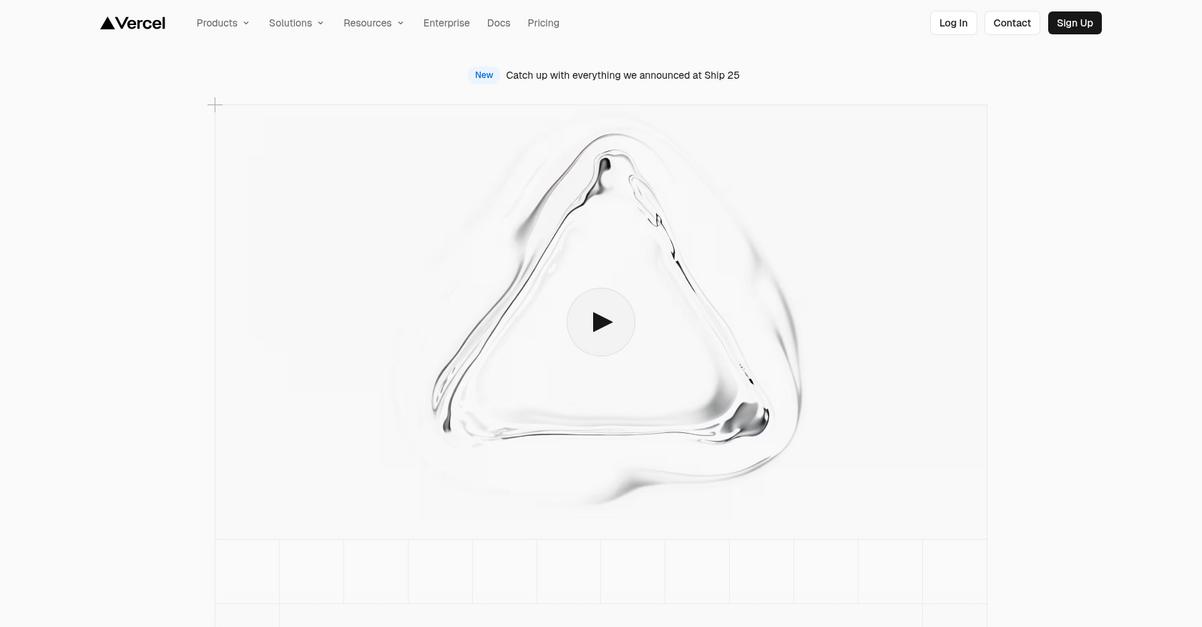
Tired of infrastructure headaches?
Vercel provides the developer tools and cloud infrastructure you need to build, scale, and secure a faster, more personalized web experience. This means you can ship features, not infrastructure.
For you, this is about automating away repetition and focusing on code. You can deploy from Git or your CLI, going from localhost to HTTPS in seconds.
Here’s your solution.
Vercel helps you focus on delivering business value by automating deployment and minimizing operational burdens. You can build and deploy on their AI Cloud.
Its CI/CD capabilities help your team ship six times faster, and every deploy is collaborative, allowing you to chat on real, production-grade UI. This improves your team’s velocity and efficiency.
Additionally, Vercel offers route-aware observability to monitor and analyze project performance and traffic, alongside instant rollbacks for safe release management. Plus, the Vercel AI Gateway lets you access major AI models through a unified interface.
The result is fast time-to-market and predictable costs.
Key features:
- Git-Connected Deploys: Deploy directly from Git or your CLI, transforming localhost projects to live HTTPS sites in seconds, eliminating manual configuration.
- Collaborative Pre-production: Facilitates real-time team collaboration on production-grade UI, enabling quick feedback and iteration before deployment.
- Instant Rollbacks: Provides automated deployments and the ability to instantly revert to previous versions, ensuring safe release management and reducing deployment anxiety.
Vercel features, pricing, & alternatives →
Verdict: Vercel is ideal if you’re seeking the best serverless platform to accelerate deployment and minimize operations. Its focus on developer experience, combined with features like Git-connected deploys and instant rollbacks, helps your team deploy 6x faster while maintaining security and scalability for customer-facing applications.
5. Netlify
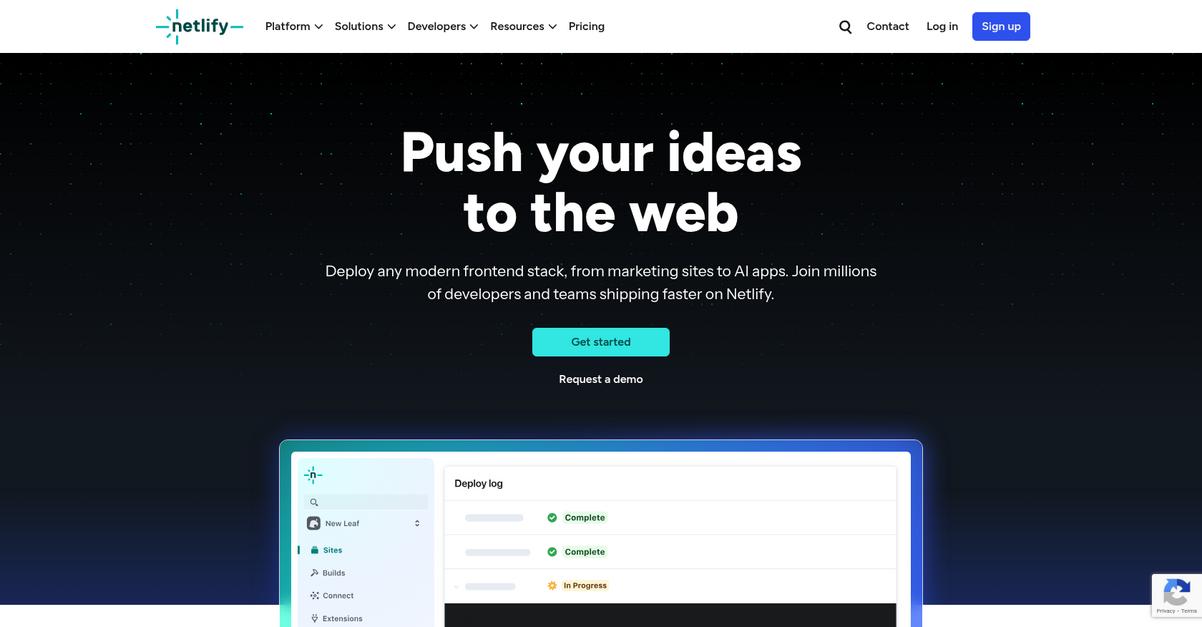
Tired of infrastructure headaches and slow deployments?
Netlify lets you instantly build and deploy your apps directly from Git, offering global network access, custom domains, and HTTPS.
This means you can focus on writing code and serving your users, as Netlify handles the operational burden of optimized builds and instant rollbacks on a global edge network, eliminating manual infrastructure management for your team.
Focus on your users and code.
Netlify helps you build any frontend app with your favorite stack and offers flexible serverless infrastructure, including edge functions and background jobs. This means you can turn every Git push into a production-ready release, enabling faster experimentation and collaboration. You’ll get instant deploy previews and keep your team in sync without managing configs or staging servers. Netlify also ensures sub-second experiences globally with granular cache and routing controls, allowing your web apps to scale automatically from zero to enterprise-level traffic with built-in security, perfect for e-commerce sites or AI chatbots.
Deliver value, not maintenance.
Key features:
- Instant Deployments from Git: Automate your CI/CD by deploying apps directly from your Git repository, accelerating time-to-market and reducing manual effort for your team.
- Global Edge Network & Automatic Scaling: Deliver sub-second experiences worldwide with built-in security and granular controls, ensuring reliable performance even during peak traffic.
- Collaborative Deploy Previews & Rollbacks: Facilitate team iteration with instant previews for every Git push and the ability to instantly revert to previous versions, minimizing deployment risk.
Netlify features, pricing, & alternatives →
Verdict: Netlify stands out as a strong contender for the best serverless platform, offering a comprehensive solution for principal engineers and CTOs seeking to eliminate manual infrastructure management and accelerate deployment. With 35M+ projects deployed and 99.99% uptime, it delivers the reliability and scalability needed for customer-facing applications.
6. Cloudflare
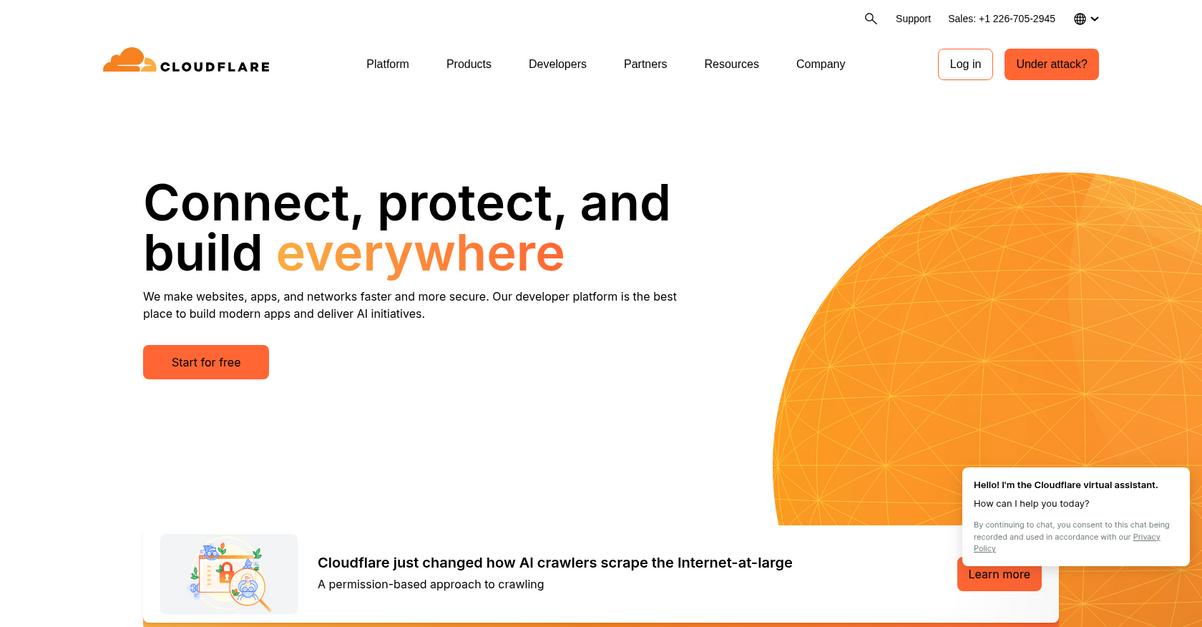
Struggling with complex backend architecture and infrastructure management?
Cloudflare’s developer platform helps you build modern applications, enabling you to focus on code. This means you can accelerate deployment and improve scaling for your customer-facing apps.
The platform lets you deploy serverless code instantly across the globe, bringing speed, reliability, and scale without operational overhead. You can even build and deploy ambitious AI applications on their global network.
Sounds great, right?
Here’s how Cloudflare simplifies your development process: it provides compute, databases, storage, and AI inference all on one unified platform. This allows principal engineers and technical leads to eliminate manual infrastructure management.
You can build serverless SQL databases with D1 and store data without costly egress fees using R2, their S3-compatible object storage. Cloudflare Workers allow you to build and deploy serverless apps, while Workers AI helps you run machine learning models directly on their network, auto-scaling up and down with no provisioning required. Additionally, they offer observability tools like logs, metrics, and traces for your Workers applications.
This ultimately means faster time-to-market and predictable costs.
As you build and deploy, ensuring robust application security is crucial. Check out my guide on static application security testing.
Key features:
- Global Serverless Deployment: Instantly deploy serverless applications worldwide for enhanced speed, reliability, and scalable performance, eliminating traditional operational overhead for your team.
- Integrated AI Capabilities: Build and deploy ambitious AI applications directly on Cloudflare’s global network, leveraging Workers AI for auto-scaling and efficient inference close to users.
- Managed Storage Solutions: Access D1 for serverless SQL databases and R2 for object storage with no egress fees, ensuring efficient data management and predictable costs.
Cloudflare features, pricing, & alternatives →
Verdict: Cloudflare excels as a best serverless platform by automating deployment and minimizing operations burden, allowing your developers to focus on delivering business value. Their integrated platform, including Workers, D1, and R2, enables reliable scaling and secure integrations for customer-facing applications.
7. IBM
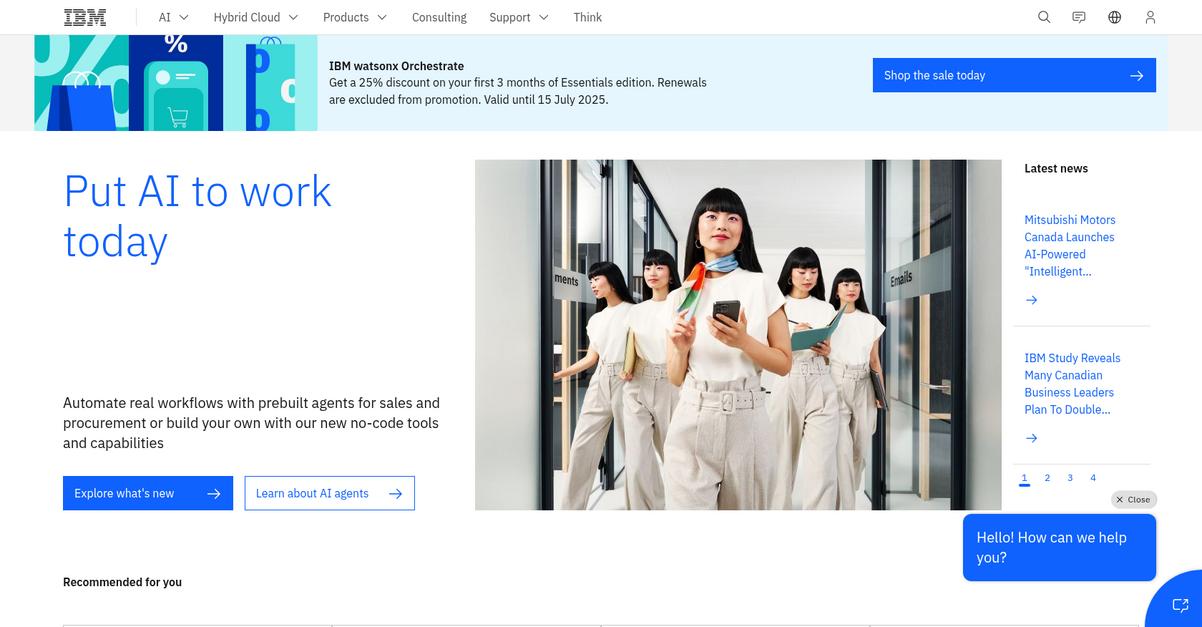
Struggling with complex infrastructure and slow deployments?
IBM offers robust AI and hybrid cloud solutions that eliminate manual infrastructure management. This means you can focus on core development.
By leveraging prebuilt AI agents and no-code tools, you can automate workflows and accelerate deployment cycles significantly. The result? Less operational burden.
You can truly focus on code.
IBM allows you to build smart, learn fast, and stay in control of your AI deployments with built-in governance. You can confidently move from AI pilots to full production.
Expand on key capabilities with specific details from homepage. IBM’s cost-efficient AI models are tailored for business and optimized for scale, supporting data-driven decisions and increasing productivity. This leads to fast time-to-market.
Additionally, their consulting services can design, build, and operate high-performing businesses, handling mission-critical workloads while maintaining security and control of your IT infrastructure. Plus, you can run applications, analytics, and generative AI with databases on any cloud.
Secure your hybrid cloud and AI.
Key features:
- AI-Powered Automation: Automate real workflows with prebuilt AI agents and no-code tools, enabling faster deployment and reduced manual infrastructure management.
- Optimized AI Models: Access cost-efficient AI models tailored for business needs and optimized for scale, ensuring reliable performance and predictable costs for your applications.
- Comprehensive IT Governance: Maintain control over your AI deployments with robust governance features, ensuring security, reliability, and smooth integration into existing CI/CD workflows.
IBM features, pricing, & alternatives →
Verdict: IBM stands out as a best serverless platform by providing comprehensive AI and hybrid cloud solutions that automate processes and optimize resource use. Their focus on AI agents and governance helps you achieve faster time-to-market and predictable costs, making it ideal for technical leads at growing SaaS firms.
8. Alibaba Cloud
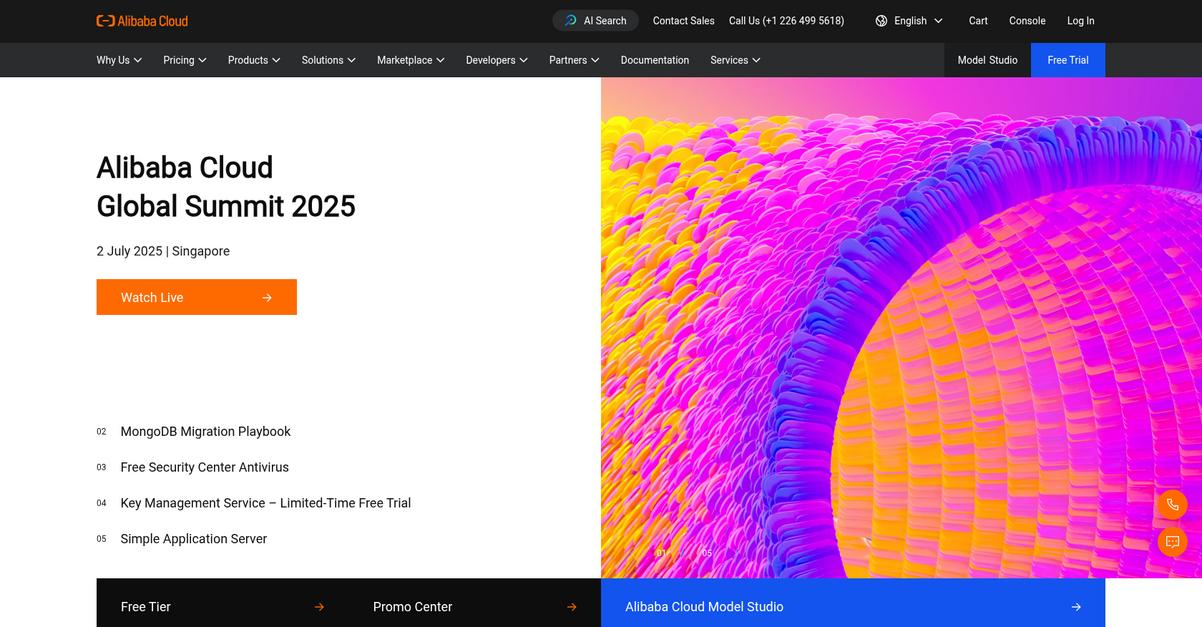
Struggling with serverless infrastructure overhead?
Alibaba Cloud offers products like Elastic Compute Service (ECS) and Object Storage Service (OSS) to reduce your team’s operational burden. This means you can shift focus from infrastructure to core business logic.
This addresses the pain point of manual infrastructure management, enabling developers to accelerate deployment and focus on delivering business value, not maintenance.
Here’s how they solve it.
Alibaba Cloud provides Elastic Compute Service (ECS), allowing you to provision and manage computing resources efficiently, helping to accelerate deployment. Additionally, their Object Storage Service (OSS) offers scalable and secure storage for your applications.
Their focus on foundational services like ECS and OSS directly supports scaling for customer-facing applications, ensuring reliable performance as your user base grows. They also offer solutions like Superapp with EMAS and Alibaba DChain for Supply Chain Planning, demonstrating their versatility.
Plus, you get access to resources like documentation, training, and certification, helping your team quickly onboard and fully leverage their capabilities, minimizing disruption to your CI/CD workflows and ensuring a smooth transition to a serverless architecture.
While discussing secure integrations, understanding data security software is crucial for your business.
Focus on code, not infrastructure.
Key features:
- Elastic Compute Service (ECS): Provides flexible, scalable computing power, allowing you to rapidly deploy and scale applications without worrying about underlying hardware management.
- Object Storage Service (OSS): Offers highly reliable and cost-effective cloud storage for your data, ensuring your applications have secure and accessible storage solutions.
- Comprehensive Solutions & Support: Features like Superapp Solution with EMAS and extensive documentation, training, and technical support streamline your serverless journey.
Alibaba Cloud features, pricing, & alternatives →
Verdict: For technical leaders seeking the best serverless platform to automate deployment and minimize operational burden, Alibaba Cloud provides robust foundational products like Elastic Compute Service and Object Storage Service. This allows your team to achieve fast time-to-market and predictable costs, ensuring secure integrations and greater focus on business value.
Conclusion
Stop wrestling with infrastructure.
Choosing the right platform is tough for any growing SaaS firm. The wrong one can lock your team into complex workflows and ballooning costs, killing innovation.
The right model makes a huge difference for your bottom line. In fact, some reports show that serverless applications can achieve over 70% savings on cloud costs. That’s a massive reduction in overhead, freeing up budget for core feature development.
Here’s what I recommend.
After evaluating all the options, I believe Amazon Web Services (AWS) is the top pick. It directly tackles the complexity of infrastructure management for your startup.
Its unparalleled flexibility and broad toolset help you automate deployment, minimize operational burden, and scale reliably. In my view, it’s the best serverless platform for taking your applications from MVP to full production without friction.
I recommend you create a free AWS account to explore its capabilities firsthand. See how it fits into your existing workflows.
You’ll ship features, not infrastructure.






